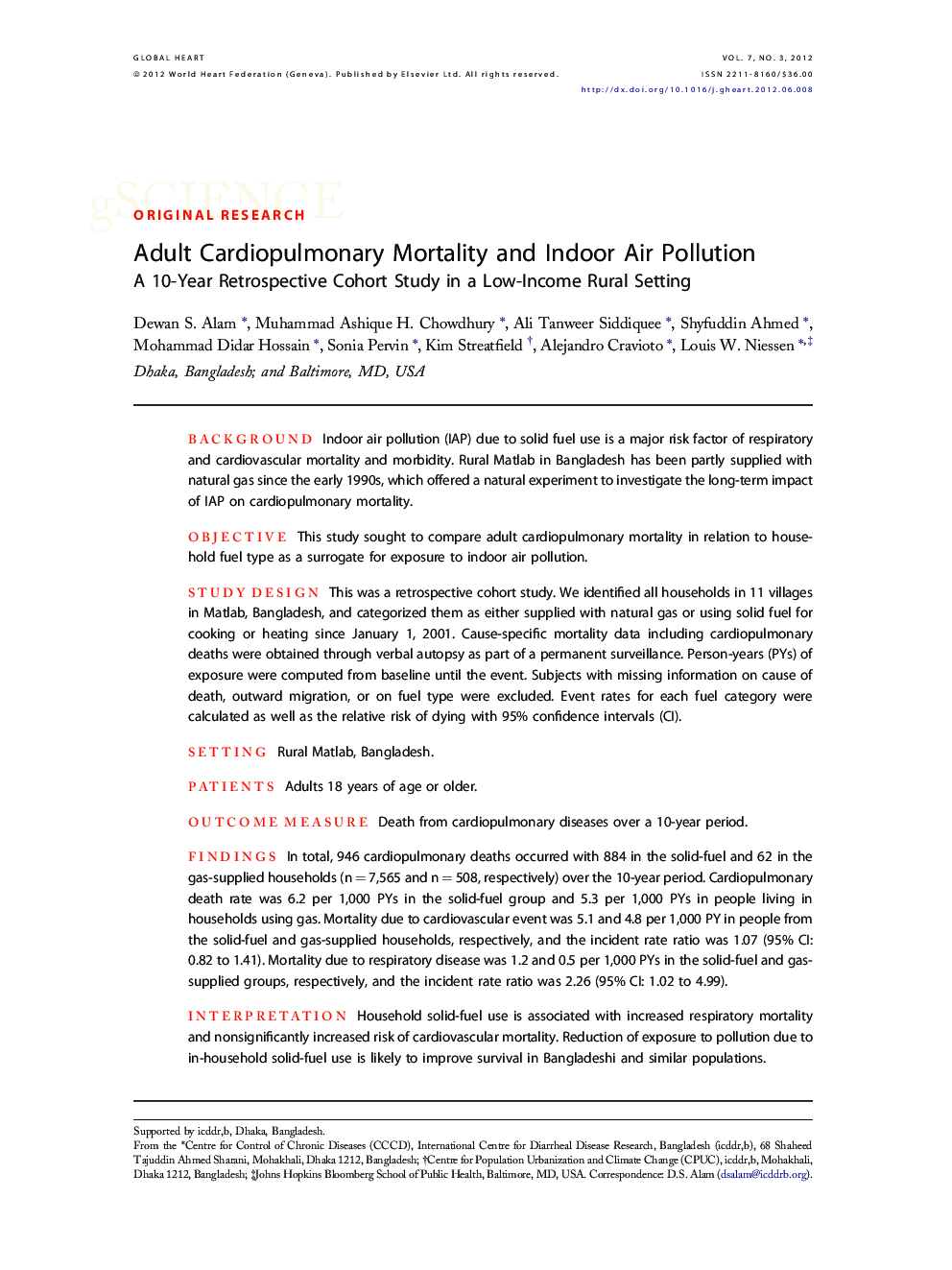| Article ID | Journal | Published Year | Pages | File Type |
|---|---|---|---|---|
| 5958867 | Global Heart | 2012 | 7 Pages |
BackgroundIndoor air pollution (IAP) due to solid fuel use is a major risk factor of respiratory and cardiovascular mortality and morbidity. Rural Matlab in Bangladesh has been partly supplied with natural gas since the early 1990s, which offered a natural experiment to investigate the long-term impact of IAP on cardiopulmonary mortality.ObjectiveThis study sought to compare adult cardiopulmonary mortality in relation to household fuel type as a surrogate for exposure to indoor air pollution.Study DesignThis was a retrospective cohort study. We identified all households in 11 villages in Matlab, Bangladesh, and categorized them as either supplied with natural gas or using solid fuel for cooking or heating since January 1, 2001. Cause-specific mortality data including cardiopulmonary deaths were obtained through verbal autopsy as part of a permanent surveillance. Person-years (PYs) of exposure were computed from baseline until the event. Subjects with missing information on cause of death, outward migration, or on fuel type were excluded. Event rates for each fuel category were calculated as well as the relative risk of dying with 95% confidence intervals (CI).SettingRural Matlab, Bangladesh.PatientsAdults 18 years of age or older.Outcome MeasureDeath from cardiopulmonary diseases over a 10-year period.FindingsIn total, 946 cardiopulmonary deaths occurred with 884 in the solid-fuel and 62 in the gas-supplied households (n = 7,565 and n = 508, respectively) over the 10-year period. Cardiopulmonary death rate was 6.2 per 1,000 PYs in the solid-fuel group and 5.3 per 1,000 PYs in people living in households using gas. Mortality due to cardiovascular event was 5.1 and 4.8 per 1,000 PY in people from the solid-fuel and gas-supplied households, respectively, and the incident rate ratio was 1.07 (95% CI: 0.82 to 1.41). Mortality due to respiratory disease was 1.2 and 0.5 per 1,000 PYs in the solid-fuel and gas-supplied groups, respectively, and the incident rate ratio was 2.26 (95% CI: 1.02 to 4.99).InterpretationHousehold solid-fuel use is associated with increased respiratory mortality and nonsignificantly increased risk of cardiovascular mortality. Reduction of exposure to pollution due to in-household solid-fuel use is likely to improve survival in Bangladeshi and similar populations.
